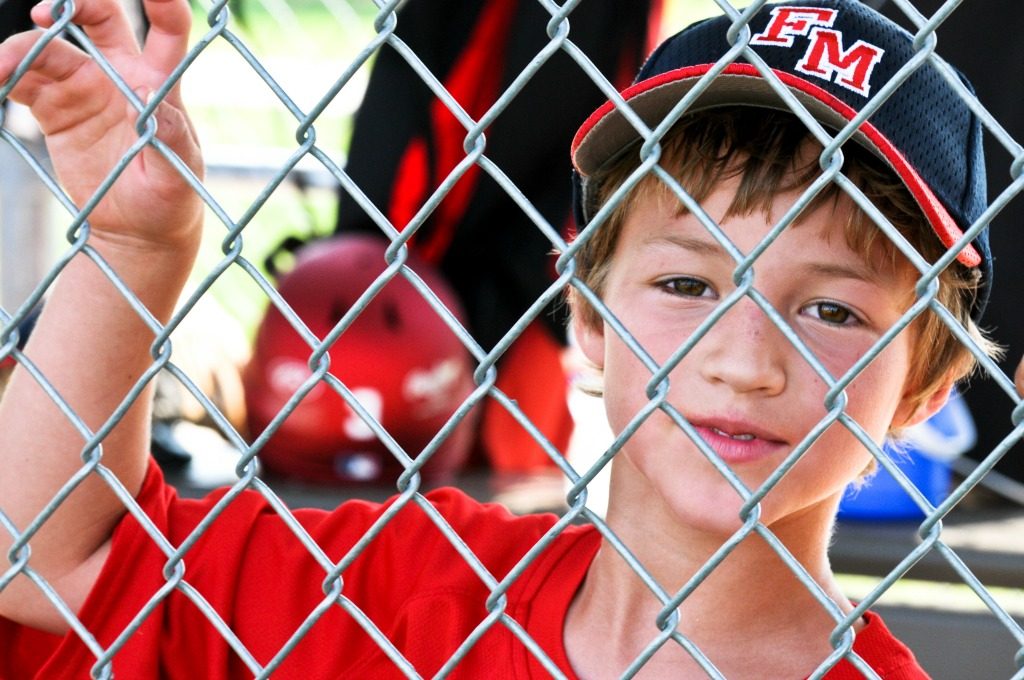Why Kids Listen To What You do, More Than What You Say
(By Guest Contributor Michael McArdle)
Hopefully this won’t be a parenting ah-ha moment for you. But if you haven’t figured it out yet, “do what I say, not what I do,” doesn’t work. When it comes to sports, what does that mean? Well, if you are one of those parents who blames the coach for a poor performance, so will your kids. Let your kids see you rant about a referee. Don’t be surprised when you catch your young athlete doing the same thing. Lose it when a call doesn’t go their way, so will they. They watch you, you know. But what you might not know is that over 80% of our perception and learning comes through vision. Which means…
Kids are going to do what you do, and not what you say.
In the human brain, neurons devoted to visual processing number in the hundreds of millions and take up about 30 percent of the cortex, as compared with 8 percent for touch and just 3 percent for hearing. Please, stop for a moment and reflect on this statement: Our brain is mainly an image processor – not a word processor. Ralph Waldo Emerson famously said:
“What you do speaks so loudly that I cannot hear what you say.”
Given this reality, that our brain learns primarily from observation, it seems puzzling that we try to “talk” our children through the world. The average person speaks approximately 16,000 words per day (and no, women do not speak more than men; that is a myth). So many words, with so little impact. We encourage, we reprimand, we coach, we implore, we yell … words … words … and still more words. At times, it seems parents (and teachers and coaches) are attempting to mentally hydrate children through a fire-hose of words.
Look, I get it. Words are necessary. They hold powerful meaning and can be critical at times. Words are formed through thought, and if we truly understood the power of our thoughts, we would guard closely against them becoming words. We would also guard closely against thoughts becoming non-verbal communication.
MORE What To Do When Your Child Doesn’t Want You At Their Game
As an educator, in a world of visual learners, a look or a gesture, carries as much weight as a full sentence. Here is an illustration: Sitting in front of a classroom of 6th graders, I heard children whispering and giggling during a quiz. Most of the time a teacher speaks out, “Hey! No talking during a test!” Words work, right? The kids are now quiet.
Stop and think for a moment. Did the words instruct? They generated compliance but failed to teach. Isn’t the fact they were whispering proof that they already knew the rule? That’s why they were whispering. In this story, I slowly walked over and softly asked, “Really?” with an appropriate palms-up shrug. That too, generated silence, but not until one of the children looked me in the eyes and said, “Sorry.” In that two-word exchange, here is what was “said.” ME: “You guys know we are taking a quiz and the rule is there is no talking during this time. I know you are aware of this rule because I can see you whispering and trying to hide your conversation from me. Is it really necessary for me to come over and teach the rule again?”
THEM: “We’re sorry you had to come over and correct us. We know the rule and we will finish the quiz before talking.”
Seventy-seven words replaced by 2, and one shrug, and no adversarial relationship was created. The power of the ability to communicate goes well beyond words. Watch the face of a child on the playing field when dad throws his arms up in frustration in the stands after a called strikeout. Not a word is exchanged and the player on the field knows he/she has disappointed dad with their performance. On the other hand, watch the child beam as mom or dad smiles and gives a thumbs-up regardless of that performance.
MORE 9 Things Good Sports Parents Avoid
Children watch and learn far more than they listen and learn. A child that goes 0 for 4 and strikes out twice understands the goal is to actually hit the ball. A verbal “lesson” on learning the strike zone is far less valuable than a smile, a hug and a statistic could teach. “Did you know Babe Ruth struck out more than 1300 times? That’s almost two full seasons of strike-outs.” (It is safe to say, Babe Ruth did just fine with occasional failure.)
Poet Walt Whitman wrote, “There was a child went forth every day. And the first object he look’d upon, that object he became. And that object became part of him for the day or a certain part of the day. Or for many years or stretching cycles of years.”
You are the “first object” your child looks upon. And you will become a part of them for many years … are you watching your messages? Because they are.
Michael McArdle is a Learning Research Specialist and the former Executive Director of the non-profit Learning Patterns Corporation. He writes, lectures, and conducts workshops on a variety of subjects dealing with the development of the human mind.
MORE ARTICLES BY MIKE MCARDLE:
Are You Raising a Child or an Adult?
The Myth of Practice Makes Perfect In Youth Sports
Giving Every Child A Trophy Is Confusing The Hell Out Of Our Kids
